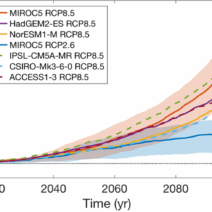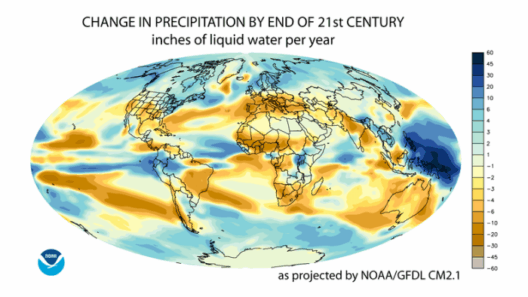Mexico stands as a captivating tapestry of climatic contrasts, a nation layered in sun, rain, and regional variations. The sheer diversity of its climate has rendered it a subject of intrigue among scientists and climatologists alike. With a topography that varies dramatically—from coastal lowlands to towering mountains—the country’s meteorological phenomena are far from uniform. This exploration seeks to demystify Mexico’s climate, illuminating the factors that contribute to its astonishing variability.
The primary climatic factors in Mexico can be distilled into three fundamental elements: solar radiation, precipitation, and geographical diversity. The interplay among these elements creates distinct climatic zones, each with unique characteristics. The sun, a quintessential driver of the climate, bathes Mexico in intense radiation, particularly in the arid northern regions. Here, the sun’s rays scorch the landscape, resulting in a parched environment marked by sparse vegetation. This aridity is accentuated by the country’s vast desert areas, such as the Chihuahuan Desert, where temperatures can soar during the day but plummet at night.
Conversely, Mexico’s southern regions benefit from a tropical climate, with lush biodiversity thriving under abundant solar radiation. Locations like the Yucatán Peninsula receive ample sunlight while also drenched in humidity and warmth. This dichotomy between the arid north and the humid south underscores a critical aspect of Mexico’s climate—the influence of geographical features, particularly the Sierra Madre mountain ranges. These formidable mountain chains create a barrier effect, impacting wind patterns and precipitation distribution across the country.
Rainfall, the lifeblood of many ecosystems, dramatically influences Mexico’s climatic identity. The northern states rely heavily on sporadic rainfall associated with the summer monsoon, a seasonal wind pattern that ushers moisture across the region, typically between June and September. Such delicate balances are easily perturbed; fluctuations in monsoon patterns can lead to either drought or deluge, evoking both economic concern and environmental stress.
In stark contrast, the southern regions of Mexico boast a year-long wet climate, with distinct wet and dry seasons. Here, the rainfall sustains dense forests and an abundance of agriculture. It is within this ecological network that tropical storms and hurricanes regularly manifest, primarily during the Atlantic hurricane season from June to November. This phenomenon necessitates disaster preparedness and presents significant challenges for local communities based on geographical vulnerabilities.
The vast regional variations in climate are also influenced by altitude. The altitudinal gradient in Mexico creates a phenomenon known as microclimates—localized atmospheric conditions distinct from the surrounding areas. For example, while coastal regions may experience a hot, humid tropical climate, elevated areas such as Mexico City (situated at over 2,200 meters above sea level) have a temperate climate with cooler temperatures and distinct seasonal variability. This elevation not only moderates the climate but also affects agricultural practices, as farmers are compelled to adapt to specific crops suited to various altitudes.
Furthermore, the intricate relationship between the land and the ocean plays a pivotal role in shaping Mexico’s climate. The Pacific Ocean and Gulf of Mexico both exert significant influences on weather patterns. Ocean currents, particularly the California Current and the warm waters of the Gulf, contribute to varied precipitation and temperature dynamics. These bodies of water are responsible for coastal breezes and thunderstorms, providing critical moisture to regions that might otherwise remain arid.
Climate change is an omnipresent challenge that amplifies existing regional disparities. Warming temperatures, altered weather patterns, and changing precipitation rates significantly impact all regions across Mexico. For instance, northern states risk increasing aridity, exacerbating water scarcity and threatening agricultural livelihoods. In contrast, southern regions may experience more intense rainfall and flooding, evincing a pressing need for climate resilience strategies.
Local responses to climate phenomena are as diverse as the climates themselves. Indigenous communities often possess extensive knowledge of their local environment, adapting traditional agricultural techniques to changes in climate. Practices such as crop rotation, natural resource management, and water conservation are deeply intertwined with cultural identities. Engaging with these traditional methods can be integral to developing sustainable practices that harmonize modern agricultural needs with environmental stewardship.
As Mexico grapples with its complex climatic narrative, the fascination lies not merely in its varied weather patterns but in understanding how these influence societal structures, agricultural practices, and ecological systems. Climate education is paramount for raising awareness about climate issues, enabling communities to respond effectively to climatic changes. This educational initiative presents an opportunity for fostering sustainable practices and building resilience against the inevitable shifts in climate.
In summary, Mexico’s climate is an intricate interplay of sun, rain, and geographic variation. Its diversity encapsulates the powerful influence of solar radiation, topographical nuances, and oceanic interactions. Each region, from the sun-drenched deserts of the north to the verdant rainforests of the south, displays its unique climatic characteristics. As climate change continues to challenge these age-old patterns, the importance of understanding and adapting to these climatic realities becomes increasingly critical. In illuminating Mexico’s climatic variations, we also shed light on broader ecological concerns pertinent to our global environment, advocating for a sustainable future that acknowledges and respects the delicate balance of nature.








